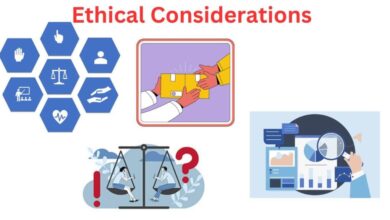From Vision to Business Success: Crafting a Winning Growth Strategy

Are you ready to take your business to new heights? If so, it’s time to develop a winning growth strategy. Whether you’re a small startup or an established company, having a clear plan for growth is essential for long-term success. In this blog post, we’ll explore what a growth strategy is and how you can craft one that will propel your business forward. From identifying opportunities to implementing actionable steps, we’ve got you covered. So buckle up and get ready to turn your vision into reality!
What is a growth strategy?
What is a growth strategy? It’s a roadmap that outlines the steps and initiatives a company will take to achieve sustainable business growth. Think of it as your game plan for success, guiding you through the journey of expansion and increasing profitability.
A growth strategy involves analyzing market trends, identifying target customers, and determining how to capture their attention. It’s about leveraging your strengths, exploring new opportunities, and staying competitive in an ever-changing landscape.
One key aspect of a growth strategy is setting clear objectives. These can include increasing market share, expanding into new markets or product lines, or improving customer retention rates. By defining these goals, you can align your resources and efforts toward achieving them.
Another crucial element is conducting thorough market research. Understanding consumer preferences, competitor strategies, and industry trends allows you to make informed decisions when formulating your growth omgblog plan.
How to develop a growth strategy for your business
Crafting a growth strategy for your business is essential to ensure long-term success and expansion. Developing a solid plan requires careful consideration and strategic thinking. Here are some key steps to help you develop an effective growth amazons gpt55x strategy.
First, analyze your current position in the market. Understand your strengths, weaknesses, opportunities, and threats. This will give you valuable insights into where you stand and what areas need improvement.
Next, identify your target audience and their needs. Conduct market research to understand customer preferences, trends, and demands. Use this information to tailor your products or services accordingly.
Once you have a clear understanding of your market position and target audience, set realistic goals for growth. Define measurable objectives that align with your overall vision for the business.
Now it’s time to explore different avenues for growth. Consider diversifying into new markets or expanding existing product lines/services. Evaluate potential partnerships or acquisitions that can accelerate growth.
In addition to exploring new opportunities, don’t overlook maximizing the potential of existing resources. Look for ways to optimize internal processes and boost productivity without compromising quality.
Remember that developing a growth strategy is an ongoing process; it requires continuous monitoring and adjustments as needed. Regularly review progress against goals and make necessary refinements along the way.
By following these steps, you’ll be well on your way to developing a winning growth strategy that will propel your business forward in today’s competitive landscape!
The 5 key components of a successful growth strategy
When developing a growth strategy for your business, it’s important to consider the five key components that can contribute to its success. These components work together to create a solid foundation and set you on the path towards sustainable growth.
1. Market Analysis: Start by conducting thorough research on your target market. Understand their needs, preferences, and behaviors. Identify any gaps or opportunities in the market that your business can capitalize on.
2. Competitive Analysis: Assess your competitors’ strengths and weaknesses. This will help you position your business effectively and differentiate yourself from others in the market. Identify what sets you apart and how you can leverage this advantage.
3. Customer Acquisition Strategy: Develop a plan for attracting new customers to your business. This may involve various marketing tactics such as online advertising, content marketing, social media engagement, or partnerships with complementary businesses.
4. Product/Service Innovation: Continuously innovate and improve your offerings based on customer feedback and evolving industry trends. Stay ahead of the curve by introducing new features, expanding product lines or exploring untapped markets.
5 Financial Planning: Ensure that you have a solid financial plan in place to support your growth goals. This includes forecasting revenue projections, managing expenses efficiently, securing funding if necessary, and regularly monitoring financial performance.
By incorporating these five components into your growth strategy, you’ll be well-positioned to achieve long-term success for your business!
How to implement your growth strategy
Once you have developed a solid growth strategy for your business, the next step is to implement it effectively. Implementing a growth strategy requires careful planning and execution to ensure its success.
The first step in implementing your growth strategy is to clearly communicate it to your team. Make sure everyone understands the goals, objectives, and action steps outlined in the strategy. This will help create alignment and focus among all team members.
Next, break down the strategic goals into smaller tasks or projects that can be assigned to specific individuals or teams within your organization. Clearly define roles and responsibilities so that everyone knows what they need to do to contribute towards achieving the overall growth objectives.
It’s important to establish a system for tracking progress and measuring results. Set key performance indicators (KPIs) that align with your growth objectives and regularly monitor them. This will help you identify any areas where adjustments may be needed or where additional resources may be required.
As you implement your growth strategy, it’s crucial to stay agile and adaptable. Be open to making changes as necessary based on market conditions or feedback from customers and stakeholders. Regularly review and evaluate the effectiveness of your implementation efforts so that you can make informed decisions moving forward.
Conclusion
Crafting a winning growth strategy for your business is crucial to ensure its long-term success and sustainability. By understanding what a growth strategy entails, developing key components, and implementing it effectively, you can position your business for sustainable growth.
In this blog post, we explored the concept of a growth strategy and how it can benefit your business. We discussed the importance of setting clear goals and aligning them with your overall vision. We also highlighted the five key components that make up a successful growth strategy: market analysis, target audience identification, competitive advantage development, marketing strategies formulation, and financial planning.





